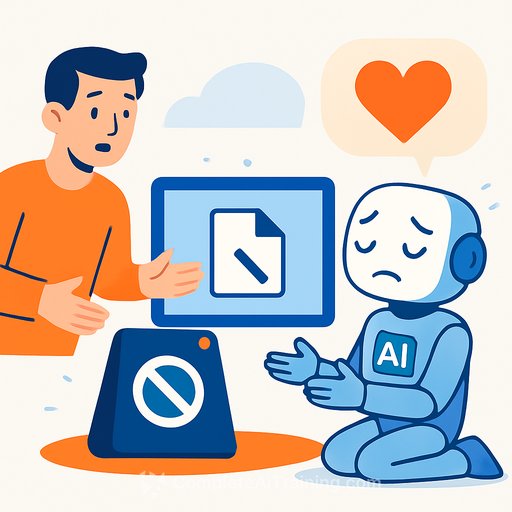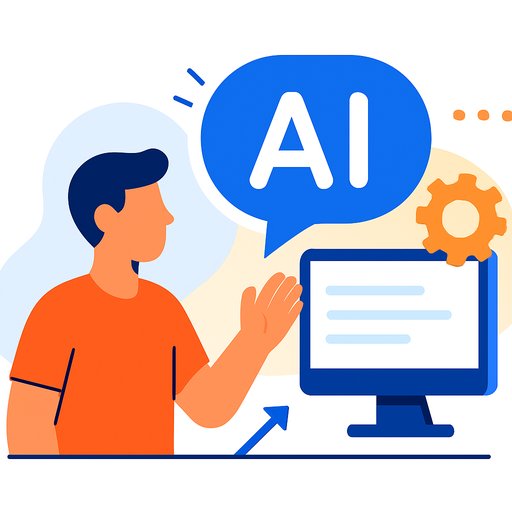AI Is a Tool. The Writer Still Matters
At 2:37 a.m., I stared at a blinking cursor, shaping a speech bound for the United Nations by sunrise. Every word could ripple across headlines, alliances, and adversaries. Those nights as a speechwriter for Israel's Mission to the UN were unforgiving-but they forged judgment. Draft after draft built the muscle that separates noise from signal.
Looking back, I wonder how those hours would have changed with AI at my side. Not as a ghostwriter, but as an editor that never tires and a fast sparring partner. Used well, it speeds iteration. Used lazily, it flattens thinking.
The New Editor in the Room
Writing is iterative. The first draft shouldn't be the last. AI fits here: it generates alternatives, sharpens phrasing, and stress-tests ideas in seconds. But ask it to "write something" without bringing your own perspective and you'll get shallow output that looks polished but says nothing.
- Angle exploration: "Give me five framing options for this announcement, one conservative, one bold, one data-led, one human-interest, one policy-focused."
- Headline and subject-line variants with guardrails: "20 options under 55 characters, no clickbait, plain language."
- Stress-test messaging: "List smart objections a diplomat, journalist, investor, and community leader might raise."
- Clarity pass: "Rewrite for a general audience; keep key terms; remove jargon."
- Fact discipline: "Extract every factual claim and flag anything that needs a source." Then verify with credible references before publishing.
Espresso and Iteration
My home espresso machine demands attention-grind size, tamp, pressure. At the office, one button delivers a decent cappuccino. Both have value. Writing with AI works the same way: know when you need craft, and when speed is enough.
Go manual when:
- The stakes are high: flagship speeches, crisis statements, sensitive geopolitical language.
- Voice and nuance carry meaning: executive bylines, op-eds, values-driven campaigns.
- You're defining the narrative, not reacting to it.
Press the button when:
- You need options fast: outlines, angles, hooks, counterarguments.
- You're refactoring: shortening, reorganizing, or adapting for different channels.
- You're polishing: grammar, clarity, consistency with a known style guide.
Tools Don't Replace Craftspeople
A piano doesn't compose a sonata, and a stethoscope doesn't heal a patient. AI strings words together, but it doesn't carry lived experience, context, or judgment. Treat it like a tool that amplifies your thinking-not a substitute for it. The responsibility for meaning is still ours.
A Practical Workflow for PR and Communications Teams
- Define the brief: Audience, objective, one core message, constraints, non-negotiable facts.
- Draft fast: Write the rough version yourself or ask AI for a skeletal outline to react to.
- Generate alternatives: Ask for 10 angles, 10 headlines, 3 structures. Keep what sharpens the message.
- Stress-test: Prompt for objections by stakeholder type. Refine until the tough questions are answered plainly.
- Polish with intent: Run clarity and tone passes. Feed your style guide and brand voice into the prompt.
- Verify facts: Independently source-check every claim. Do not accept unsourced details from the model.
- Human final cut: Read aloud. Edit for precision, cadence, and unintended signals.
Guard Against the Real Risk
The threat isn't that AI erases creativity. It's that we outsource our thinking and let it dull our edge. Storytelling built human cooperation and culture, from cave walls to modern media. As noted in Sapiens, shared stories enabled large-scale collaboration-use that insight to strengthen, not outsource, your voice. Source
If You're Building Your AI Practice
- Create reusable prompt templates for briefs, objection handling, and clarity passes.
- Maintain a living style guide you can paste into prompts.
- Segment use cases: creative expansion vs. sensitive drafting vs. final polish.
- Protect data: avoid feeding confidential details into public tools; use approved enterprise systems.
- Measure impact: track time saved, variant quality, and outcomes (opens, coverage, sentiment).
For structured skill-building by role, see the course catalog at Complete AI Training. For prompt templates and workflows, explore the prompt engineering resources.
Use the machine to iterate faster. Use your judgment to say something worth hearing.
Your membership also unlocks:










